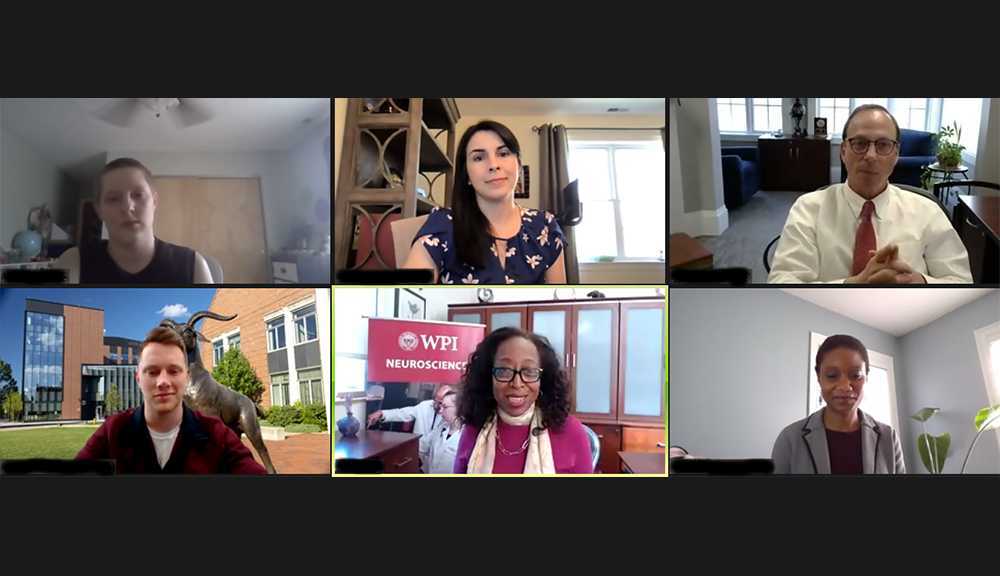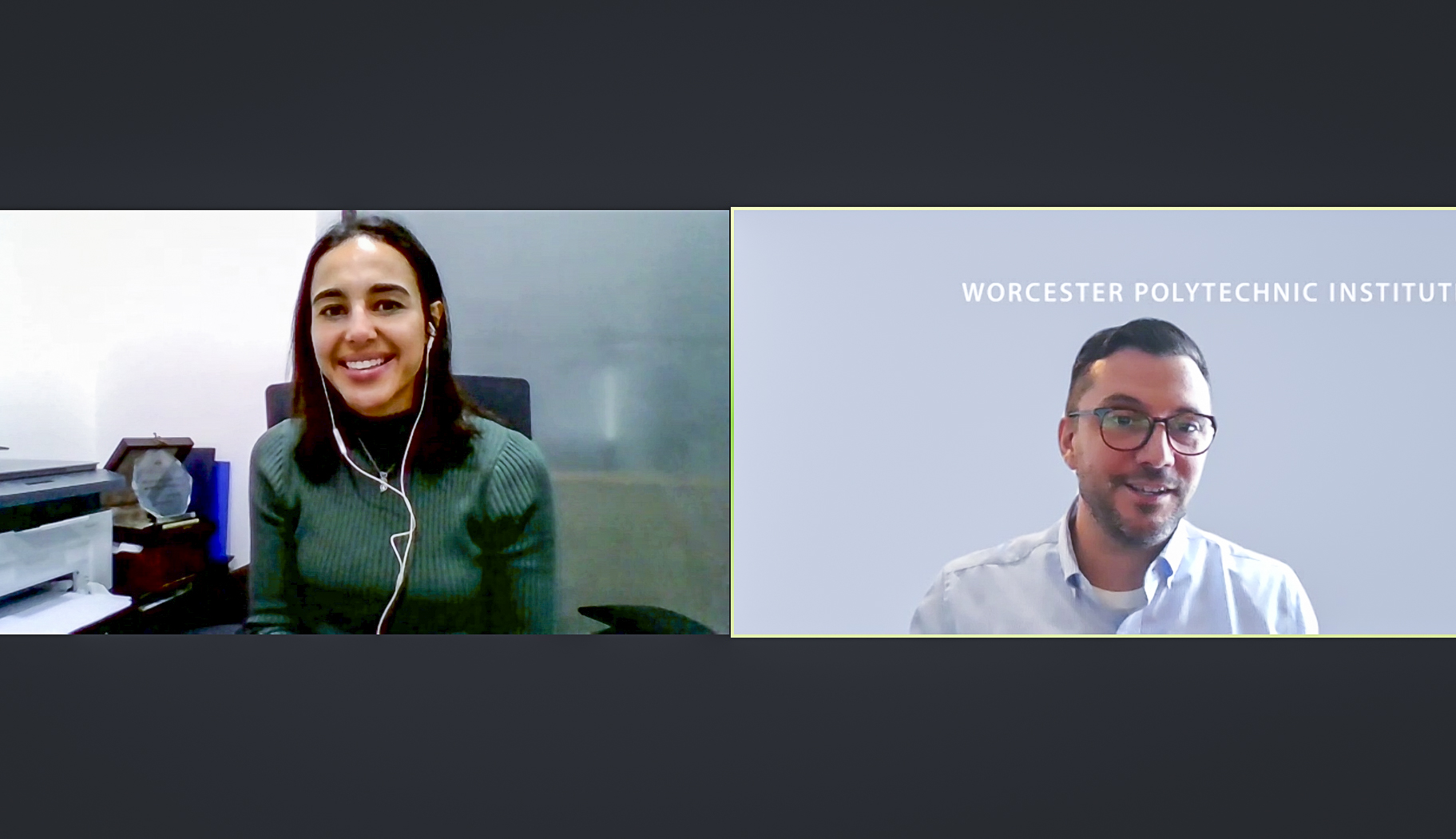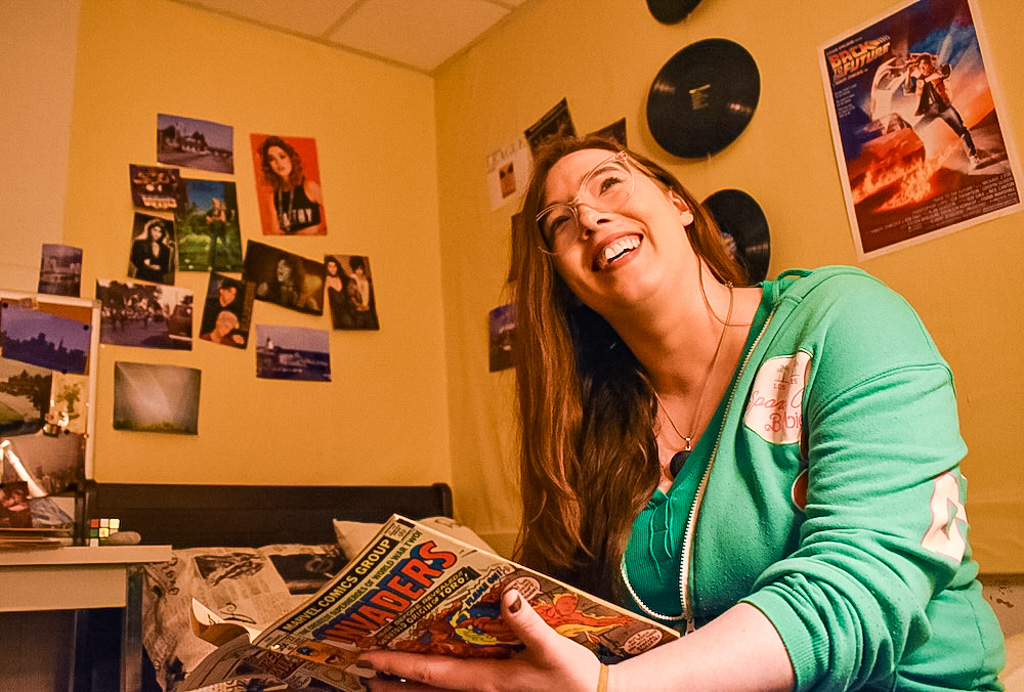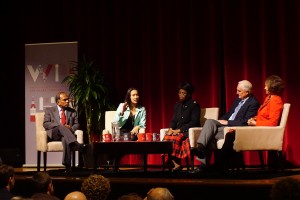 Growing up in the inner city Bronx, Wanda Austin acknowledges that she didn’t have much in the way of mentors.
Growing up in the inner city Bronx, Wanda Austin acknowledges that she didn’t have much in the way of mentors.
Still, the encouragements of one teacher in particular have stuck with her to this day: “You’re good at this. Don’t let anybody tell you that you’re not,” the president and CEO of The Aerospace Corp. pointed out at a symposium on Friday as part of President Laurie Leshin’s weekend inauguration ceremonies.
“It’s helpful if you have a role model who looks like you, but it’s not critical,” she added. “We all benefit from getting those diverse viewpoints in.”
The importance of mentors to fostering innovation and entrepreneurship was just one of the points touched upon in a lively and informative discussion, “Inspired to Innovate: A Future-Focused Conversation,” moderated by Leshin on Friday afternoon at Alden Memorial. Among the key topic areas were the Global Impact of STEM Higher Education; Technological Innovation and Entrepreneurship; and Disruptive Innovation in Higher Education. The four panelists included Austin; Craig Barrett, retired chairman and CEO of Intel Corp.; Mariko Silver, president of Bennington College in Vermont; and Subra Suresh, president of Carnegie Mellon University in Pittsburgh and former director of the National Science Foundation.
The distinguished panel was hand-picked by Leshin based on their numerous professional achievements, as well as their dedicated commitment to technological innovation and STEM education. The panelists steadfastly agreed that the country’s schools, beginning at the kindergarten level, must do more to foster an interest in STEM fields that can be used to take on a panoply of real-world problems. Addressing the country’s performance in STEM leadership, Barrett noted the strong standing of U.S. colleges and universities, but cautioned that they face intense competition.
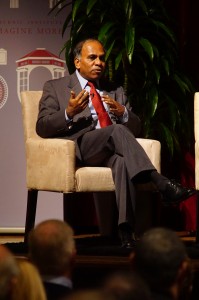
Subra Suresh
Although the world has historically “voted with their feet” in coming to the U.S. for its top-tier universities, “there are some leading indicators (that) the rest of the world is catching up,” he said. For example, he pointed to the fact that American students are falling behind foreign students when it comes to GMAT scores, and are also lagging in worldwide contests in which they once excelled, such as those held annually by the Association for Computing Machinery.
Ultimately, “everyone wants to work with talented people,” Austin added, whether they’re in the states or not. To get them here and keep them here, “we need well-educated, tech-savvy leaders,” she said, noting that, whatever their background, “he who builds the best toy wins.”
Leshin interjected, “Or she.”
“Well, we know if it’s a she, she wins,” Austin quipped back.
It comes down to encouraging students from a young age to embrace mathematics and science-based disciplines “and not run from them,” Austin said. Opportunities to do this include creating programs that require mathematics or other STEM disciplines, setting firm expectations, assisting teachers with creating examples that inspire, getting students involved in internships at an earlier age, and encouraging the entrepreneurial spirit and helping lead young people through the complicated process from germ to completion.
It’s not a sprint, or an honor for just a select few, she said. “This is very much a journey.”
Barrett suggested another way to make STEM fun is to sanction competitive robotics teams at the high school and collegiate levels.
Another key to moving ahead is creating more of a synergy between science and the arts.
“How do we get students to actually live in the middle?” said Silver (as opposed to taking an engineering course in one place and a painting course elsewhere).
She said she envisions a “scientization” of the study of the human condition, which can ultimately help the next generation of creators and great thinkers interpret and understand problems and ask the right questions. “How does storytelling help us to understand the way that we want to think about designing a technology so that it will be useful to people?”
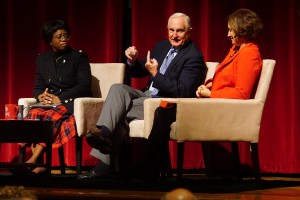
Craig Barrett emphasizes a point.
It’s also important to recognize how important diversity is to education, Suresh stressed.
People from different backgrounds “look at the same problem from very different lenses,” he said, also noting that innovation comes “in many different flavors,” and is one of the greatest equalizers. For example, “we put a man on the moon before we put wheels on the suitcase,” he said, the crowd chuckling in return.
While the moon landing was monumental, “wheels on the suitcase is very innovative, as well,” he said. And ultimately, in addressing any issue, technology isn’t the sole answer. It’s a tool, and it’s how you use it that’s key, Barrett said.
“Computers aren’t magic in the classroom,” he added. “Teachers are the magic in the classroom.”
– BY TARYN PLUMB
